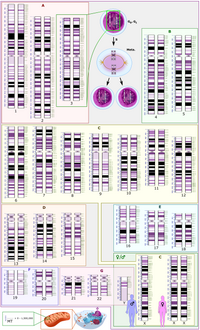
Photo from wikipedia
Significance The wide range of behaviors exhibited by Escherichia coli isolated from diverse environments is expected to be reflected in the sequence variation of its genome. Large-scale multi-strain assessment of… Click to show full abstract
Significance The wide range of behaviors exhibited by Escherichia coli isolated from diverse environments is expected to be reflected in the sequence variation of its genome. Large-scale multi-strain assessment of the E. coli genome finds that the coding-region is highly conserved and that its scant variation is enriched in benign mutations. Contrastingly, mutations acquired through laboratory evolutions are more severe and are rarely found in nature. The antagonistic roles of general evolutionary pressures between wild-type and laboratory-evolved strains may explain these differences. Our study suggests that natural evolution produces intraspecies phenotypic diversity primarily by modulating protein abundances—rather than by altering protein properties. In comparing natural and synthetic E. coli mutations, we identify “sequence space” that may guide future experimental design.
Journal Title: Proceedings of the National Academy of Sciences of the United States of America
Year Published: 2023
Link to full text (if available)
Share on Social Media: Sign Up to like & get
recommendations!